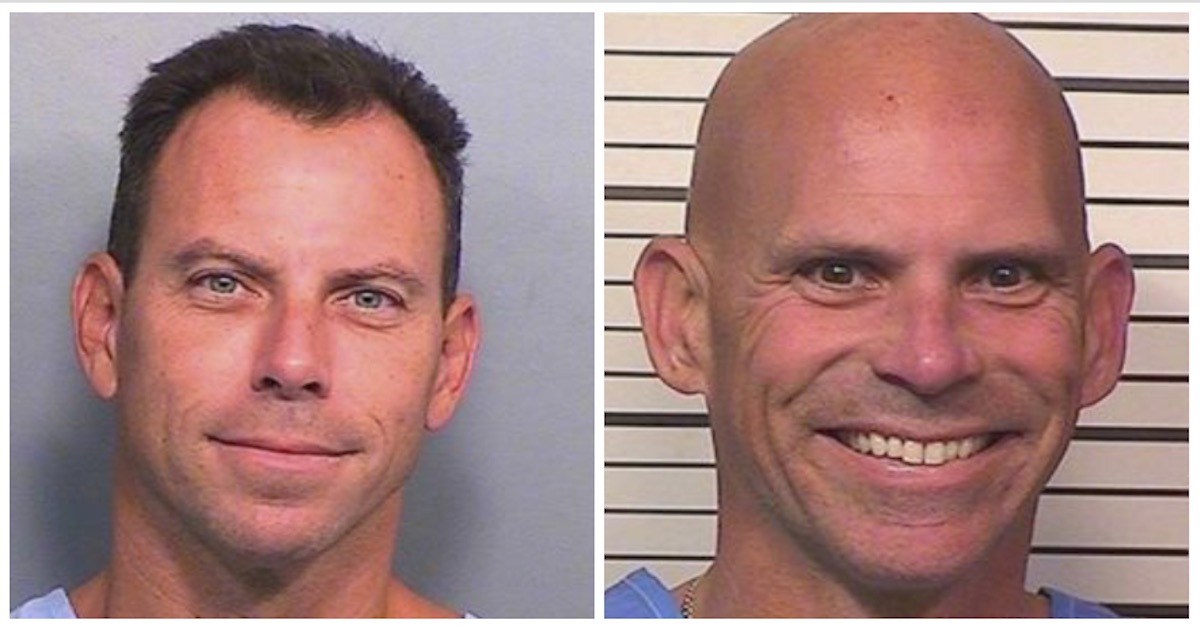
An Oct. 31, 2016 photo provided by the California Department of Corrections and Rehabilitation shows Erik Menendez, left, and a Feb. 22, 2018 photo provided by the California Department of Corrections and Rehabilitation shows Lyle Menendez (California Department of Corrections and Rehabilitation).
In August 1989, the Menendez brothers went into their family den in their Beverly Hills mansion, where their parents Jose and Kitty Menendez were watching television, and fired over fifteen total rounds, killing them both, culminating in a tragic end to a childhood already filled with alleged abuse of all forms, including sexual.
A little over six months later, the brothers were arrested and charged with first-degree murder, and a trial was set in July 1993, with separate juries. At the time, prosecutors attempted to prove the brothers committed the murders for financial benefit, pointing to their excessive spending spree of over $700,000 after the killings, with both purchasing lavish jewelry, homes, and cars. The district attorney’s office argued the boys had killed their parents so they could collect their inheritance, insurance policies, and any other money left to them in their father’s will — yet no one at the time was prepared for the story that then unfolded by the defense.
The brothers’ defense team, led by Leslie Abramson and Jill Lansing, walked the two separate juries — one for each brother — through agonizing and detailed testimony from the two boys about the sexual, physical, and mental abuse they allege they said they suffered from their father Jose Menendez. By January 1994, the trial concluded and the juries were hopelessly deadlocked, unable to reach a conclusion. Days later, it was revealed the disagreement was marked largely by gender, with many female members of the jury arguing the brothers acted in self-defense, while a large portion of the men believed the requirements of premeditated murder were met. In the end, six women voted for manslaughter and six men voted for first-degree murder.
Specifically, many of the women believed the boys were abused, whereas the male jurors seemed more preoccupied with Erik Menendez’s sexual orientation — a narrative the prosecution attempted to weave into its arguments at the trial. The case was ultimately retried in 1995, yet this second trial was vastly different from its predecessor: the judge, Stanley Weisberg, prevented any evidence regarding sexual abuse from being discussed, no cameras were allowed in the courtroom, and the defense claims of “imperfect self-defense” — which would require a showing that the brothers believed they were in imminent danger — was taken off the table, essentially eliminating the possibility of manslaughter and leaving only murder, with its heavy potential sentence.
By 1996, the two were found guilty of first-degree murder and sentenced to life in prison without the possibility of parole. By 2005, the brothers had exhausted all options for an appeal, and have been serving the nearly past 20 years with virtually no hope of ever getting out.
By 2023, however, that began to change.
New evidence that was not available at the time of either trial surfaced, including a letter written by Erik Menendez to his cousin in December 1988 — eight months before the murders — discussing sexual abuse he suffered at the hands of his father, and a declaration from a former member of the Latin boy band Menudo, who claims he was also sexually abused by Jose Menendez, then an entertainment executive, in the 1980s. With that revelation, the brothers’ attorneys Cliff Gardner and Mark Geragos filed a habeas corpus petition to challenge their convictions.
The habeas corpus petition remained dormant for nearly half a year, until September 2024. By that point, even though the Menendez case had been documented for decades in television, film, news, and other media, an unprecedented amount of attention was now surfacing as a result of the Netflix series “Monsters: The Lyle and Erik Menendez Story.” Renewed interest had been mounting on the case in recent years, with numerous clips of the trial popping up on TikTok and Gen Z members expressing support for the brothers, urging their release in light of the abuse they suffered. Yet by the release of the Netflix series, pressure from the media, supporters, and followers in general began to mount as to whether the Los Angeles County District Attorney’s Office would rule on the petition. By October 2024, then District Attorney George Gascon recommended the resentencing of the brothers, enabling a Los Angeles Superior Court judge to make the official decision.
Many claimed Gascon made this decision after the petition had been pending for months in an effort to secure his reelection, yet by November 2024, a new DA, Nathan Hochman, had taken over. In the same month, a Los Angeles County judge postponed a hearing over the possible release of the brothers, stating he wanted to allow Hochman the chance to get properly up to speed on the case and go through all of the trial documents.
Possible paths to freedom
With so many new developments, many followers are wondering what are the potential pathways to freedom that the brothers have, and what is the likelihood of success for any of them?
There are three main ways the brothers could potentially gain release from prison. One of them is if they were granted clemency by Gov. Gavin Newsom, although the governor has stated he would delay his decision until the new DA completes his review of the case. Another pathway would be if a new trial was offered, based on the newly discovered evidence that seems to support the brothers’ claim of abuse — yet many believe another trial would be unlikely, given the immense resources, time, and finances it would cost the state. Moreover, difficulties are sure to arise in terms of finding an impartial jury with little to no knowledge of the case, the changing attitudes our society has had on themes of the case such as incest and childhood abuse, and a large amount of the public supporting the brothers’ release.
Finally, the most likely possibility out of the three lies in potential resentencing of the brothers, focusing primarily on the new evidence proposed by their attorneys and their record while they have been incarcerated. The next hearing for the brothers will take place before a Los Angeles judge on Jan. 30, 2025, during which a variety of witnesses will discuss the original trials and the brothers’ prison records. In the event the judge approves the brothers’ resentencing, the case will move before a parole board, which will then also have to rule collectively to approve or deny their release.
Sexual abuse and the justice system
The topic of abuse played a huge part in the original 1992 trial, and created a division within not just the jury but even the general public.
At the time, the general subject of abuse of any kind was not widely discussed in society. To put it into greater context, the murders occurred in 1989, and the Violence Against Women Act was not even enacted until years later in 1994 — the first time a federal law acknowledged domestic violence as a crime in the United States. Until that point, violence or abuse that occurred within the home or between partners was seen as a private family matter. At the time of the first trial, the general public was not prepared to discuss the idea of abuse and its after effects in general, let alone sexual abuse committed against young boys by their own father.
Now, in 2024, many social media followers, journalists, and members of society — particularly those in younger generations — can more fully understand the impact that devastating abuse can have on victims and the drastic effects that can occur as a result. Firstly, now many understand how the effects of child abuse can take years to process, including trauma responses and PTSD, which aids in comprehending why the brothers took such radical action. Secondly, years of research and psychology have shown how the “battered person syndrome” can develop, when a person who has been so severely abused can be led to harm or kill their abuser, even if they are not in imminent danger in that moment. Thirdly, society’s views regarding victims of abuse in general has immensely changed, given the birth of the MeToo movement, organizations such as Time’s Up and others that provide support to abuse survivors, and the overall media coverage and general awareness regarding abuse.
Most importantly, the past decade has shown that abuse can affect anyone, no matter their gender, wealth, or any other background. Now, many of the brothers’ supporters are hoping that this heightened sense of education and awareness about abuse can play a crucial role in supporting their release.
Looking forward
While many thought the fate of the brothers was forever sealed when they were sentenced to life in prison without parole, it is clear the public is eager to know whether their future might be completely changed with a potential release.
While we know the resentencing hearing is set to occur in January, it is impossible for anyone to foresee whether or not the brothers will ultimately be released. What is more clear are the various factors that courts and prosecutors will keep in mind.
What will be closely examined during the decision-making process is the brothers’ behavior during their time in prison; those advocating for Erik and Lyle say they have been model prisoners who have stayed out of trouble, and that there is no evidence indicating the brothers have been violent toward their fellow inmates.
Additionally, what will also be scrutinized are any ways the brothers have attempted to improve themselves or help others during their time serving at the Donovan Correctional Facility in San Diego: specifically, Lyle has obtained a bachelor’s degree in sociology and formed support groups for other sexual abuse victims, while Erik has also obtained numerous college degrees, worked with terminally ill and physically challenged inmates, and also teaches mediation and speech classes. Both brothers have launched Green Space, a beautification initiative aimed at promoting a healing and rehabilitative space for inmates.
Finally, many have pointed out that the fact that the brothers have been incarcerated for nearly 35 years is far beyond the amount of time other inmates charged with murder have served — specifically, Lyle revealed in his appearance on a 2023 episode of the podcast “Onward with Rosie O’Donnell,” that inmates charged with murder have come into the same prison as him and Erik, served their time, and left, all while the two brothers have still remained behind bars for the same charge.
While none of us can predict how the brothers’ potential release will unfold in the upcoming year, one thing that their case has done is shine a much-needed spotlight on the issue of childhood sexual abuse, and its long-lasting effects. Now, other criminal cases touched by issues of abuse, incest, and other traumatic aspects are seen more differently than they were in decades prior.
In the words of Lyle Menendez himself on the 2023 podcast episode: “I don’t even think it was accepted in the ’80s and early ’90s that fathers were child predators like that. It was another decade or two … after our trial, before people understood that child molesters could be your teacher, could be your gym coach, could be an executive, a father … there was a sense that child molesters were kind of like creeps in trench coats hanging around schools and not regular people. Now of course we know that’s completely untrue.”



